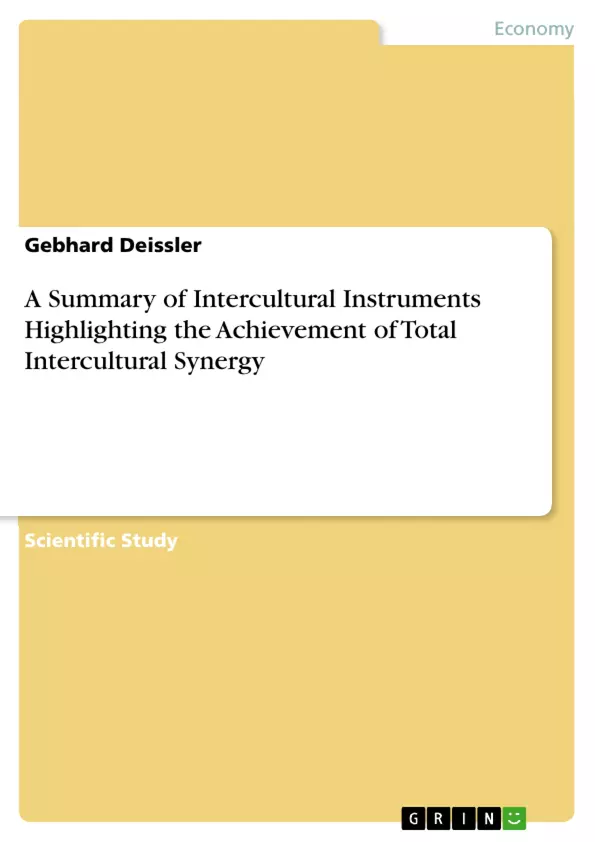The study provides and overview of intercultural management instruments while it hihglights a method for the achievement of high-level intercultural synergy.
Inhaltsverzeichnis (Table of Contents)
- An Intercultural Management Toolbox
- The Achievement of Total Intercultural Synergy
- The Technical Terminology of Intercultural Communication and Management: An English Language Transcultural Dictionary
Zielsetzung und Themenschwerpunkte (Objectives and Key Themes)
This text focuses on providing a comprehensive overview of intercultural management, aiming to equip readers with a practical toolbox for navigating and achieving success in diverse cultural contexts. It explores the complexities of intercultural communication and the challenges of managing diverse teams, emphasizing the importance of understanding cultural differences and fostering synergy.
- The importance of recognizing and managing cultural differences in communication and interaction
- The role of cultural filters in shaping perceptions and interpretations
- The development of a "quantum cultural effect" through inter-transcultural complementarity
- The application of practical tools and models for intercultural management
- The significance of a transcultural dictionary for enhancing understanding and communication across cultures
Zusammenfassung der Kapitel (Chapter Summaries)
An Intercultural Management Toolbox
: This chapter introduces the core principles and tools for successful intercultural management. It presents three key models: the ORJI Model (Ed Schein), the MIS Factor Process (N. Adler), and the PIE Metaphor, highlighting their importance in understanding and managing intrapsychic processes in intercultural encounters. The chapter emphasizes the need for continuous checking and questioning routines, the importance of empathy and cybernetic thinking in managing diverse perceptual filters, and the necessity of separating the phases of perception, interpretation, and evaluation.The Achievement of Total Intercultural Synergy
: This chapter (which is not summarized due to spoiler considerations) delves into the concept of achieving total intercultural synergy, exploring the dynamics of cultural integration and collaboration. It likely examines the challenges and strategies for fostering a truly integrated and cohesive intercultural environment.
Schlüsselwörter (Keywords)
This text focuses on key concepts and terminology relevant to intercultural management and communication. Key themes include intercultural synergy, cultural filters, intrapsychic processes, perception-interpretation-evaluation, transcultural communication, and the development of a transcultural dictionary.
- Citation du texte
- D.E.A./UNIV. PARIS I Gebhard Deissler (Auteur), 2012, A Summary of Intercultural Instruments Highlighting the Achievement of Total Intercultural Synergy, Munich, GRIN Verlag, https://www.grin.com/document/192195



